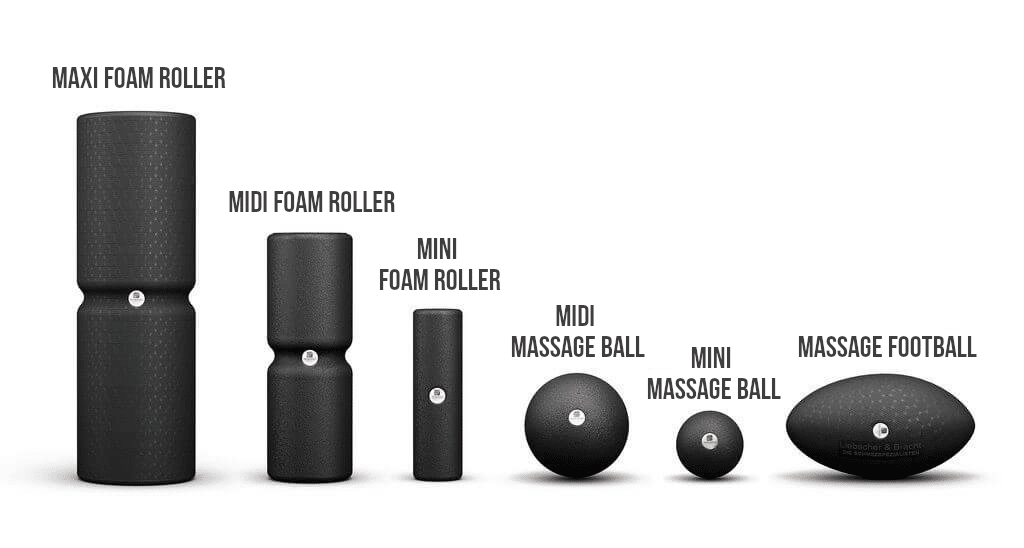Let the good times foam roll:
Check out our YouTube channel for foam rolling massage tutorials, and our website for foam rolling exercise guides and informative pain management articles.
Mehr ErfahrenWould you like to relieve an ache or pain without medication? A foam rolling massage could be just the thing. Foam rolling is an easy, effective home remedy that you can use to target pain anywhere from head to toe. All you need is the right foam roller. Let’s take a look at exactly what makes foam rolling so effective, how to best use a foam roller, and which foam roller is best for you.
Are You Ready to Roll?
Your muscles, bones, and joints are covered by connective tissue called fascia, which helps you move. Healthy fascia is supple, slippery, smooth, and flexible. If fascia dries, tightens, or becomes gummy, it can limit your range of motion, cause muscle tension, and pain. Unhealthy fascia is often the result of a sedentary lifestyle or repetitive movements.
Foam rolling keeps your fascia healthy because it moves the interstitial fluid, which surrounds your cells, through your body. Metabolic waste is pushed out and fresh interstitial fluid flows in stimulating cell regeneration.
If you’re foam rolling your back, buttocks, or legs, you’ll want to roll along the floor or a wall. For other body parts, place the foam roller on the area of your body affected by pain, apply pressure, and roll slowly in the direction of your heart.
While you are foam rolling, it’s important to be aware of your personal pain scale. Your personal pain scale gauges how intense the pressure you’re applying is. Think of foam rolling the same way you’d think of intense exercise. To maximize the benefits, use lots of effort and forceful energy. Always aim for an intensity of between 8 and 9 on your personal pain scale. Challenge yourself and listen to your body. Intense is good, but you don’t want to hurt yourself. Our foam rolling instructional videos and guides include reminders to check in with your personal pain scale.
We recommend foam rolling once a day, six days a week for six weeks. It’s important that you give your body time to rest inbetween so that it has time to recover and your cells can regenerate.
(If you are suffering from severe pain, start by foam rolling every other day. When you feel ready, increase the frequency of your sessions as you see fit.)
Combine foam rolling with one of our pain-relieving exercises for a six week sprint. After six weeks, you can reduce your foam rolling sessions to every other day.
We strongly recommend that you foam roll in the direction of your heart and in one direction only. Foam rolling towards your heart helps with blood flow and keeps your veins safe.
Our tip:Foam roll when you are relaxed and focused. Your fascia has nerves, and it can tighten up if you feel stressed.
You can foam roll with any brand of foam roller. However, some rollers on the market are very hard. These foam rollers can cause a good deal of pain, especially on areas of your body where bones are close to your skin. If your roller is too hard, you’ll be much less likely to apply the amount of pressure needed for an effective foam roll massage.
Foam rolling should be an intense experience, but it should not be a painful one.
The Liebscher & Bracht foam rollers have been developed with your body in mind. Made from high quality foam, each roller has a soft, pliable surface and a firm center for an intense, pain-relieving experience.
Let the ouch be your guide. We offer a variety of foam rollers, each of which has been designed to target pain at different areas of your body.

Let the good times foam roll:
Check out our YouTube channel for foam rolling massage tutorials, and our website for foam rolling exercise guides and informative pain management articles.
Mehr Erfahren
✓ Do foam roll:
X Don’t foam roll: